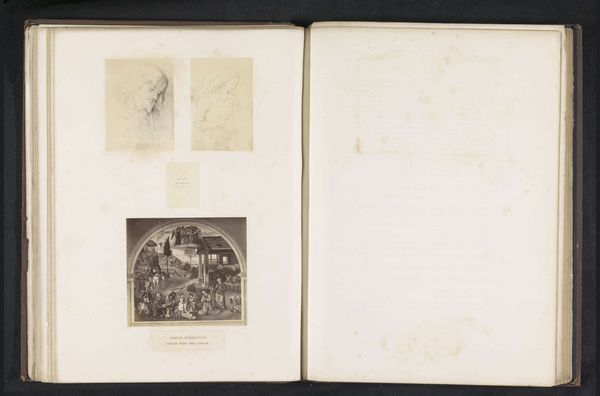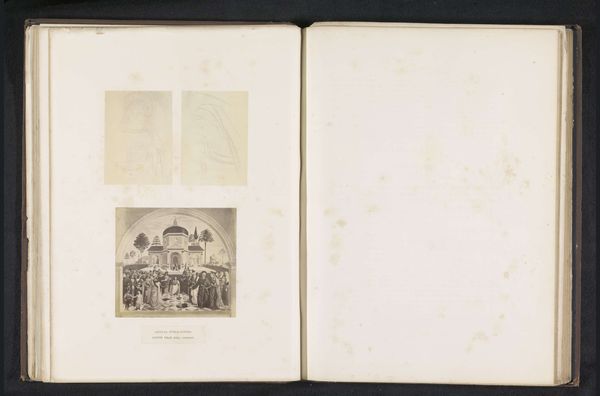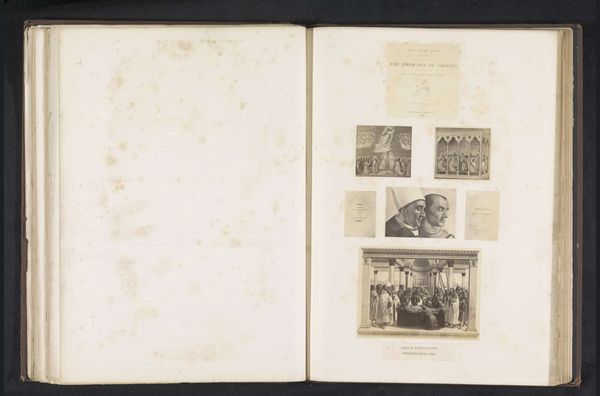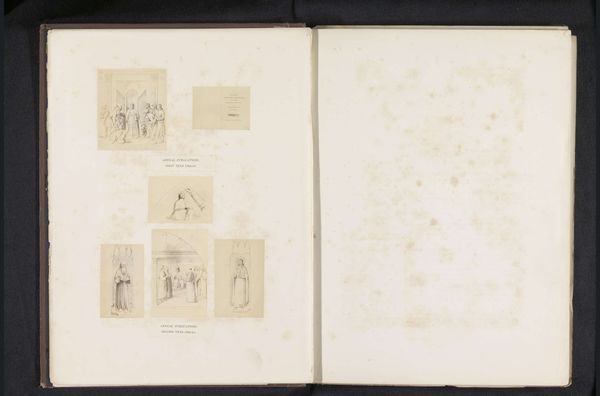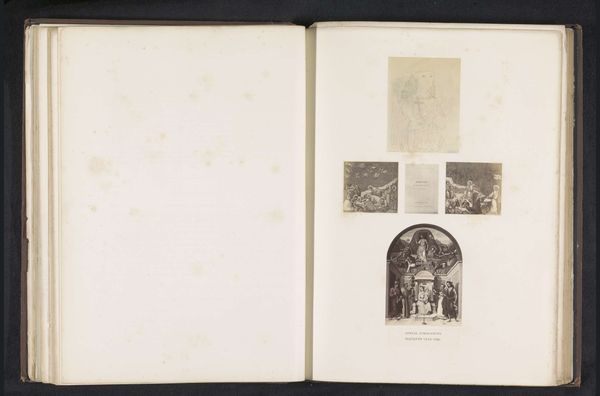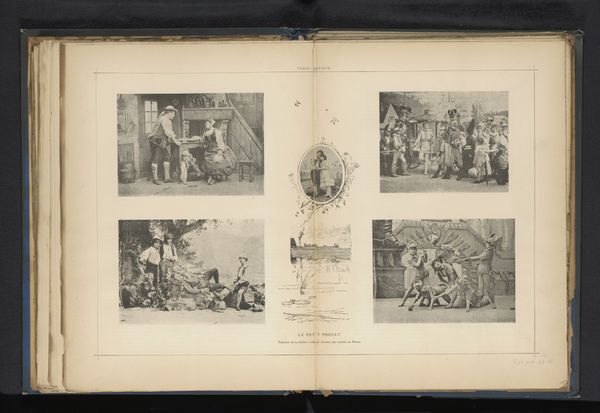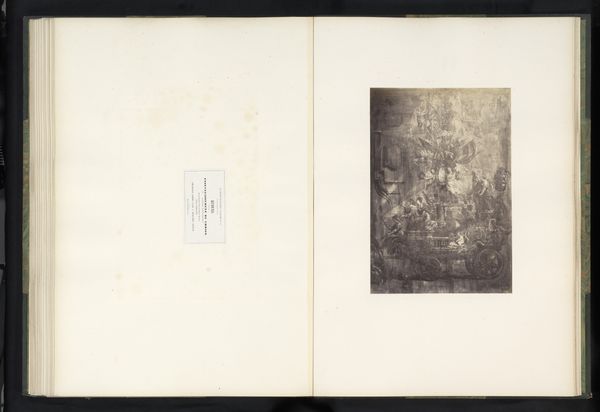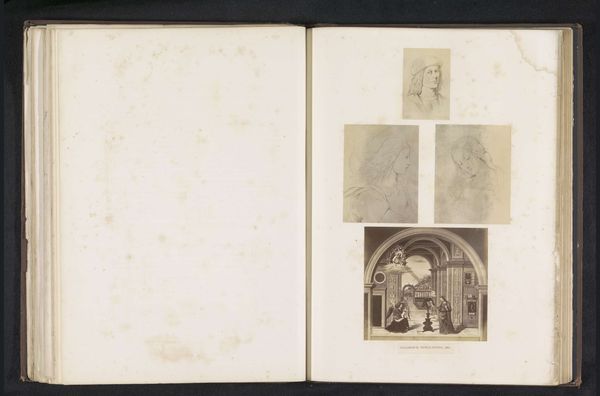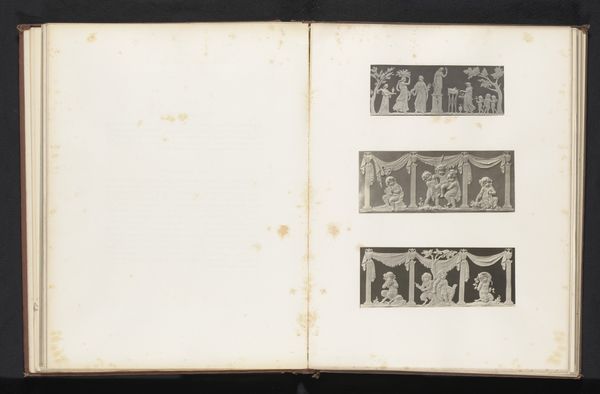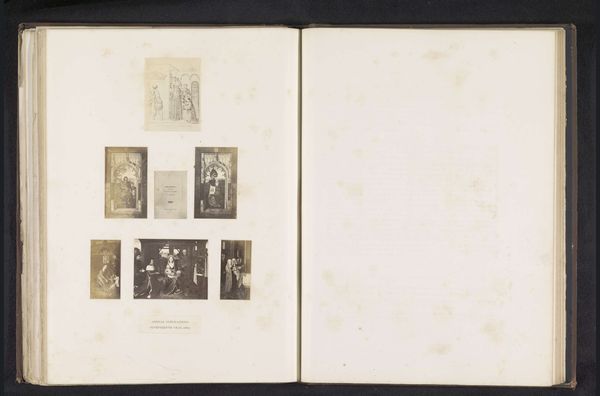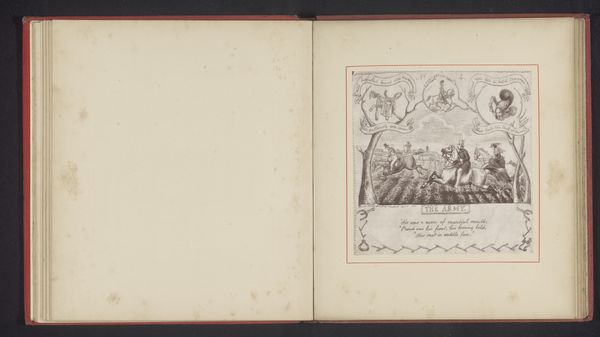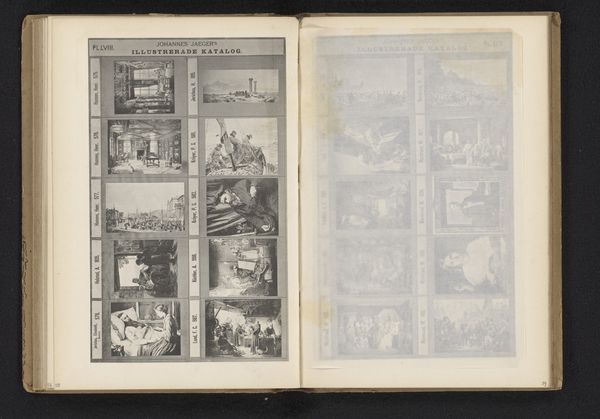
Vijf fotoreproducties van een publicatie door de Arundel Society met schilderingen van Giotto en Perugino before 1869
0:00
0:00
lithograph, print, etching, paper, photography, engraving
#
lithograph
#
ink paper printed
# print
#
etching
#
book
#
paper
#
photography
#
engraving
Dimensions: height 378 mm, width 290 mm
Copyright: Rijks Museum: Open Domain
Curator: This intriguing album page showcases photographic reproductions of paintings by Giotto and Perugino, initially published by the Arundel Society, dating to before 1869. I am struck by the stark juxtaposition of the blank facing page, heightening the intensity of images. Editor: Yes, it's a powerful contrast. The materiality of this piece, the layers of reproduction – from painting to print to photograph to album – tell a story about the consumption and dissemination of art. What strikes you first about these photographic plates? Curator: The engraving quality. There's a precision to the linework that really captures, even translates, the stylistic elements of both Giotto and Perugino. Observe how the engraver evokes depth and perspective in the Scrovegni Chapel illustration. Editor: I’m more focused on how the original art was translated through reproduction processes involving photography, etching, and lithography. The labour involved in creating these reproductions, to disseminate these masterpieces, it mirrors the efforts involved in creating the initial artworks themselves, doesn’t it? The materials and techniques say as much about 19th-century society as they do about the Renaissance. Curator: Precisely. But let’s not overlook the compositional organization. The Arundel Society seems to have carefully arranged these reproductions on the page to establish a dialogue between distinct pictorial traditions. There’s an undeniable semiotic density at play. Editor: I think, this approach to assembling images emphasizes the artwork as commodity, highlighting the industrialized distribution of artworks for popular education, more than any refined formal language. How did these reproduced images then transform art making? Curator: Well, the dissemination allowed access to art for broader audiences that perhaps previously may have lacked any contact with such works of art, therefore impacting art production in general! Editor: Indeed. Ultimately, the beauty here resides not just in the refined aesthetic reproductions of Giotto and Perugino, but in the testament to a wider, material and societal transformation surrounding artistic dissemination. Curator: A fitting and multi-layered convergence of sight and purpose.
Comments
No comments
Be the first to comment and join the conversation on the ultimate creative platform.
